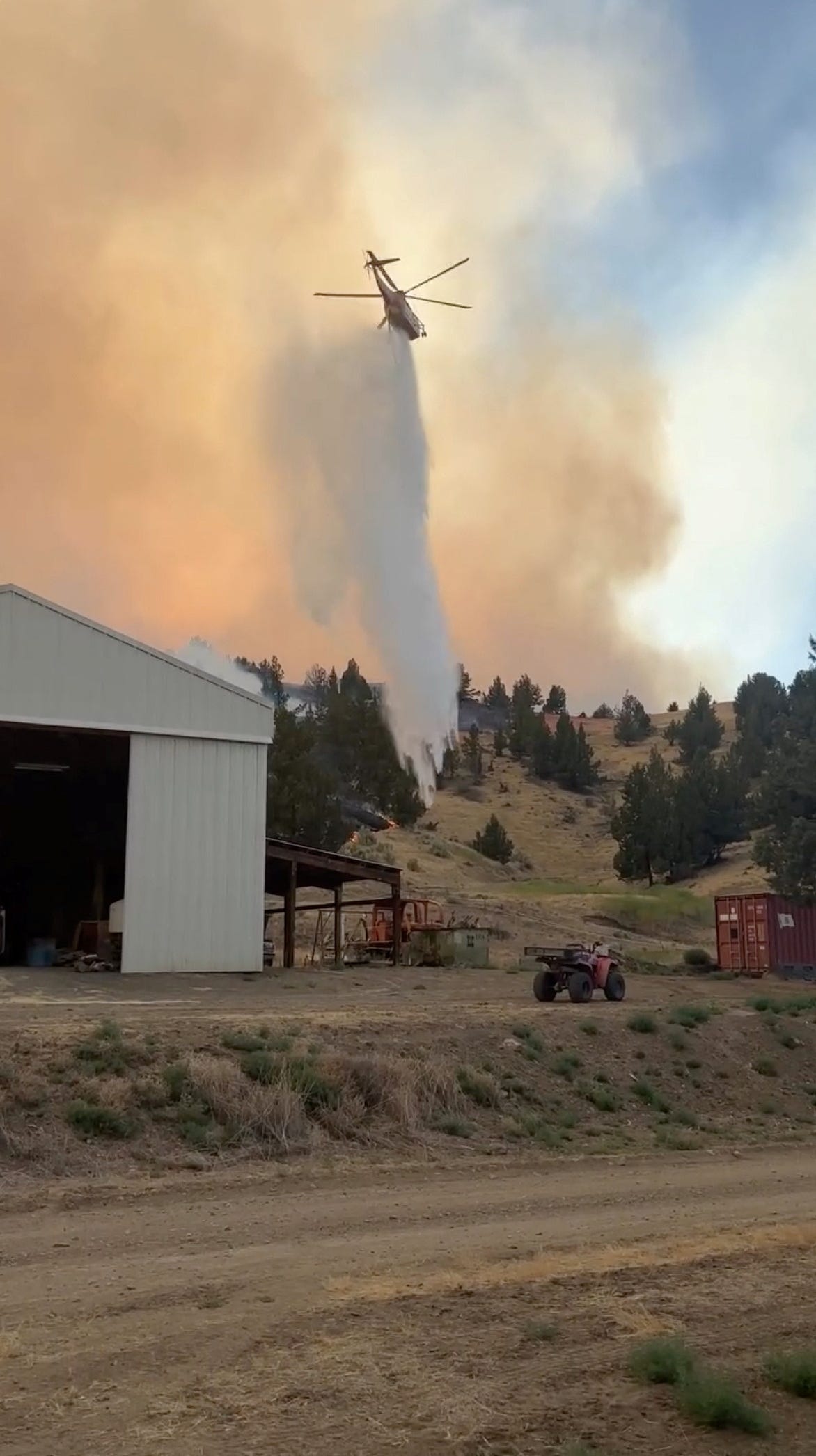The Cram Fire: A Growing Threat in Oregon
The Cram Fire, which has rapidly expanded in central Oregon, has become the largest wildfire in the nation this year. As of July 20, the fire had grown to nearly 100,000 acres, destroying four homes and threatening hundreds of structures. Authorities have reported that the blaze, which started on July 13, has been fueled by hot and dry conditions, along with gusty winds that have increased the risk of wildfires across parts of the state.
Fire crews have faced significant challenges due to changing wind directions and rugged, steep terrain. However, cooler temperatures and higher humidity levels over the weekend have provided some relief, helping firefighting efforts. By 9 a.m. local time on July 20, the fire had reached 95,748 acres and was 49% contained. Officials noted that the size of the fire was slightly reduced from July 19 after more accurate mapping was completed.
Crews are continuing their work, building on progress made over the previous days. Cooler temperatures and higher humidity levels have created better conditions for mop-up work, particularly along the fire perimeter and around structures. The fire ignited near Willowdale, a sparsely populated area about 133 miles southeast of Portland, and has spread through grasslands and rangeland in the region. The cause of the fire is still under investigation.
According to the Jefferson County Sheriff’s Office, a total of four residences and two other structures were destroyed in the fire. Local authorities in Jefferson, Wasco, and Crook counties have issued evacuation orders or warnings across multiple zones. By the afternoon of July 20, some areas saw a reduction in evacuation levels.
The Cram Fire is one of at least 46 active wildfires in Oregon, most of which have been contained. It also leads the list of wildfire incidents in 2025, followed by the Madre Fire in central California, which has burned nearly 81,000 acres.
Megafire Status and Response Efforts
The Cram Fire is getting dangerously close to becoming Oregon’s first megafire of the season. A megafire is defined as a wildfire that burns more than 100,000 acres of land. Fire officials have deployed more than 900 personnel, including 88 fire engines, 18 handcrews, and eight helicopters, to combat the blaze.
On July 20, the Central Oregon Fire Information noted that while fire behavior has moderated, crews continue to focus on gridding near the fire’s perimeter and reducing materials that could fuel spot fires. Scott Stutzman, operations section chief of the Oregon State Fire Marshal, highlighted the favorable weather conditions and the progress made by crews during a video update.
Statewide Emergency and Ongoing Threats
In response to the growing threat, Oregon Governor Tina Kotek declared a state of emergency that will last through the end of the year. This declaration was made due to the imminent threat of wildfire. Multiple large wildfires have already exploded in 2025, largely east of the Cascade Range. According to the Salem Statesman Journal, Oregon’s wildfire danger is forecast to remain above normal through the summer.
Kotek emphasized the severity of the situation, stating, “Oregon is already experiencing a devastating wildfire season that will have lasting consequences.” She added that the summer is only getting hotter, drier, and more dangerous, urging preparedness for worsening conditions.
National Wildfire Concerns
The National Interagency Fire Center warned on July 20 that “fire activity is high across the country,” with 91 large, uncontained wildfires nationwide. Nearly 18,000 wildland firefighters and support personnel are currently on the ground. In 2025 so far, there have been 40,934 total wildfires, covering a combined acreage of 2,850,245.
Hot, dry, and windy weather continues to fuel wildfire conditions across parts of the Northwest, Great Basin, and Southwest. Some areas are expected to see wind gusts over 40 mph and low humidity levels dropping into the single digits. The center also noted that each year, thousands of wildfires in the United States are caused by human activities, including loss of control of debris burning, unattended campfires, and sparks from vehicles and equipment.







